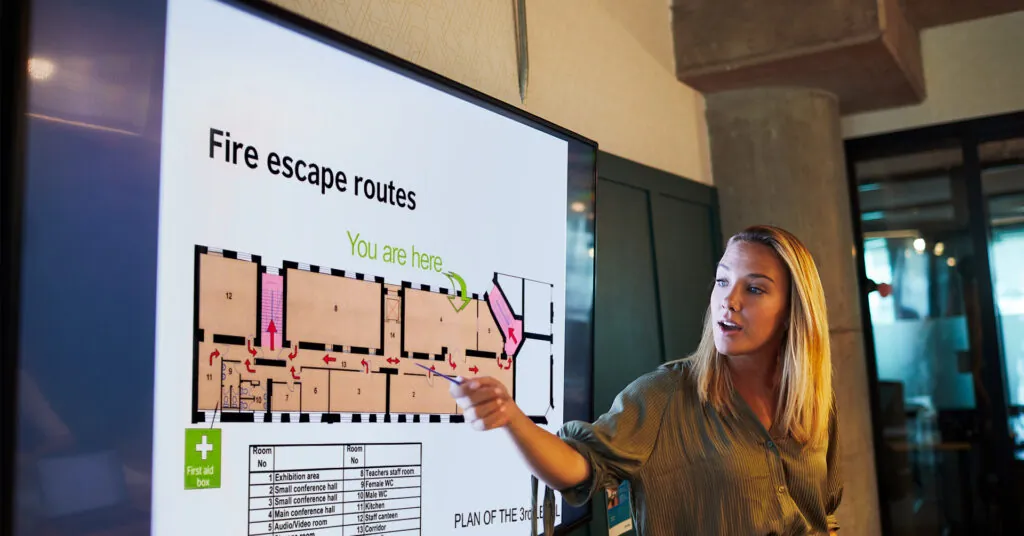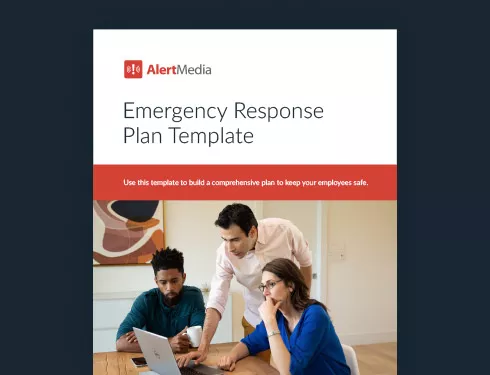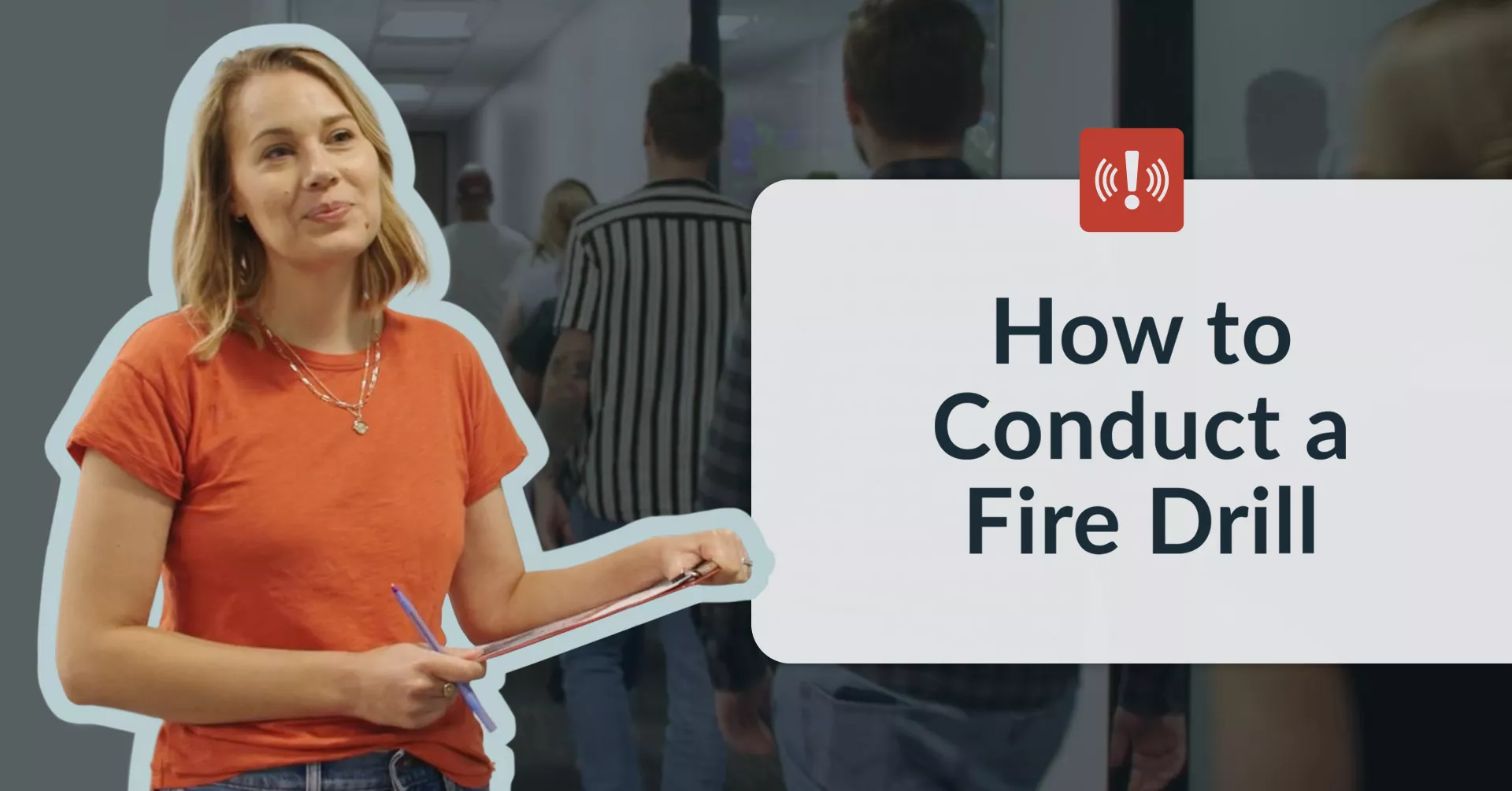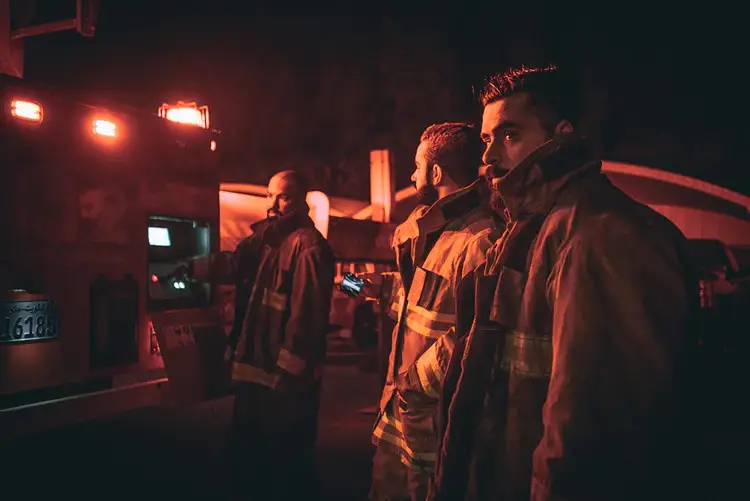
Emergency Drills for the Workplace: Types and Tactics
Safety drills are one of the most effective ways you can prepare your organization to deal with an emergency situation—without having to learn the hard way.

Many companies learn the hard way that they need new emergency action and communication plans. “We had a major tornado hit the area, and the only way we could communicate with employees was by having managers personally call employees over and over until they could reach them,” says Diana Pethtel, ERP Systems Staff Administrator at automotive parts manufacturer FCC. “It was a tedious, time-consuming, and ineffective approach.” With a focus on protecting employees and business operations, FCC implemented and tested new procedures.
Some disasters—like tornadoes—can be forecast with limited certainty. But others, like earthquakes, fires, and active shooters, can occur without any warning. When an emergency situation occurs in the workplace, every second counts. Delays in evacuating, sheltering, or putting emergency preparedness plans into action increase the chances of injuries, or worse, death.
Safety drills are one of the most effective ways you can prepare your organization to deal with an emergency situation—without having to learn the hard way. Drills put your emergency response plans to the test, reveal details you may have missed and give your team an opportunity to practice for any given scenario. Let’s explore the importance of emergency drills, how to conduct them effectively, and some of the common exercises your company might need.
Download Our Emergency Response Plan Template
Why Regular Safety Drills Are Important
Every safety leader hopes their company will never face a disaster. But if your team does face an emergency situation, you want them to be as prepared as possible.
While you can’t simulate the feeling of an emergency, you can better enable team members to respond to it. For example, research shows that personnel involved in lockdown drills and training feel more prepared to face an emergency afterward. And in the event of a fire, an employee who has practiced using an emergency route repeatedly has a better chance of safely exiting the building.
The healthcare industry is a perfect example of how impactful emergency drills can be. Hospitals and clinics don’t just have to worry about their staff members, but they also have to consider patients who might be unable to care for themselves. Thorough planning and practice can make a significant difference when a healthcare organization faces an emergency.
Gulf Coast Regional Blood Center experienced the power of emergency drills in 2017. As Hurricane Harvey inundated the Houston area with rainfall, they experienced power outages, many blocked roads and limited communication. Thanks to their preparation and quarterly disaster drills, The Blood Center was able to account for all of their employees, provide regular updates, and keep blood deliveries moving to hospitals at a critical time.
How to Conduct Effective Drills and Exercises
As a school-age child, fire drills seemed simple. The alarm would go off, you’d file outside, line up on the playground and enjoy a few minutes in the fresh air.
Developing and executing an emergency management plan for the workplace is quite a bit more complicated. Most importantly, you won’t know how a plan performs until you test it out—that’s where emergency drills come in. By running them in a structured fashion, you can exercise your disaster plans, collect feedback, and improve the procedures over time.
Here are the five key steps to effective safety drills.
1. Get full organizational buy-in
To run a successful emergency drill, everyone involved needs to be ready. As important as safety is, not every employee thinks about it on a day-to-day basis. Getting buy-in from everyone from the C-suite on down promotes safety engagement and emergency preparedness.
There are three layers of organizational buy-in to consider:
- Leadership and executives should participate in safety drills. They also need to agree on the timing, since safety drills impact company operations
- Safety leaders, including internally appointed “fire wardens,” should be ready to practice their roles
- Every employee should be aware of the drill and understand its importance
2. Communicate the plan
Next, you want to make sure everyone is aware of the plan. While a surprise alarm might inspire haste in evacuating, it creates unnecessary chaos and risks reducing the drill’s effectiveness.
Use every communication channel at your disposal to let personnel know when the drill is taking place, the relevant emergency procedures it will practice, and detailed instructions for the drill:
- Send company-wide messages via email, SMS, Slack, or an emergency communication system
- Automatically schedule the drill on employees’ online calendars
- Place a reminder on your company intranet
3. Establish goals
To determine wins and spot areas for improvement in your emergency plans, you need measurable goals. When setting goals, keep in mind the realities of your organization, such as team composition and the buildings they occupy, as well as the most likely scenarios your company will face.
Some of the common metrics to assess during emergency drills include:
- Set target times for everyone to evacuate and reach their designated assembly areas
- Do the same for securing hazardous materials, and measure that separately from the total evacuation time
- Determine the minimum amount of time it will take to shut down heavy machinery that could exacerbate an emergency
- Include qualitative goals like employee understanding and confidence—if someone’s running around confused during a drill, they’re a risk to both themself and others
Additionally, consider whether goals need adjustments for factors like severe weather. If your company sits on a sprawling campus and you’re practicing a full-scale emergency evacuation plan, consider that your team might need to navigate outdoor areas with ice and snow during a real emergency.
4. Practice the emergency procedures
Once you’ve prepared, it’s time to actually run drills. In many cases, that means running a full-scale exercise, such as evacuating an entire building or shutting down a factory to make sure your team can do it quickly enough.
However, there are also more limited and less disruptive ways to run safety drills. For example, you can run floor-by-floor evacuations to assess response time and make sure areas are free of obstacles.
You can also run tabletop exercises to simulate many aspects of emergency response procedures. These are particularly useful for response teams to practice their roles and review plans without impacting your whole company’s productivity.
5. Collect and analyze results
When the emergency drill is complete, you need to assess how your team did. Key stakeholders in the process should collaborate on an after-action report that covers the critical points of the safety drill and how it went:
- What were the goals and expectations for the drill?
- What actually happened?
- What aspects of the drill were successful?
- What aspects need improvement, and were there flaws in planning or execution?
With that information in hand, you can refine your plans, run more drills in the future, and determine whether you’re measurably improving your company’s emergency preparedness.
Types of Emergency Drills
Safety drills are not a one-size-fits-all topic. It’s critical to focus on scenarios that are realistic for your workplace, both from an environmental and organizational perspective. A company in San Diego doesn’t need to run tornado drills, nor does an accounting firm need to consider heavy machinery in their emergency plans.
Let’s go through five of the most frequently used emergency drills for workplace safety.
Fire and evacuation drills
In situations where your company needs to evacuate the premises, building occupants don’t just need to know where the nearest exit is. Your emergency plans should also include evacuation routes, designated assembly points, and a check-in process once they’re safe.
A successful fire drill will exercise all of these aspects of your evacuation procedures:
- Instruct employees to use their designated emergency exit, or simulate dangers that force them to seek an alternate route
- Practice safety leadership roles such as fire warden and floor warden, and simulate conditions where specific personnel are incapacitated or unavailable
- Review the assembly plans and make sure employees know where to go, including backup sites
- Make sure all of your fire alarms and signage work
- Test your company’s employee safety monitoring platform to ensure people know how to check in after evacuating or report emergent risks
Lockdown and shelter-in-place drills
Sometimes, your team will need to stay in a given location rather than evacuate. These situations call for lockdown and shelter-in-place drills. While the two concepts are similar, there are some key differences:
- Lockdown: When you lock down a facility, you’re trying to prevent an immediate threat from gaining access and putting employees at risk. This could be anything from a single attacker to large-scale civil unrest.
- Shelter-in-place: Sheltering-in-place is more focused on staying safe from an environmental threat than a human one. For example, if a blizzard moves into your region earlier than expected and makes driving unsafe, employees might need to shelter at work temporarily. While securing the facility is still important, it’s a secondary priority behind avoiding the severe weather in the first place.
These drills have a few priorities:
- Make sure your facilities have safe locations for employees to separate themselves from a threat, whether it’s a person or an environmental threat
- Along with drilling the process of sheltering, practice the process of sending the all-clear signal
- Consider access to food, water, and first-aid supplies—if they’re not stored in the shelter locations, they should be easily accessible
Active shooter drills
Active shooter drills are a contested subject, even among safety professionals. But the unfortunate reality is that mass shootings are increasingly common, and some companies have implemented them in order to prepare their employees for the possibility.
There are two primary schools of thought:
- Lockdown: Much like a general shelter-in-place scenario, employees attempt to secure their location and wait for help. Unfortunately, this can lead to scenarios where people are trapped in a confined space with a shooter, rendering them defenseless.
- Tactical: Tactical shooter drills take a more complex approach, as they train employees to decide on a run, hide, or fight response. Companies who opt for this approach will often hire consultants who specialize in the field.
Whichever direction you opt for, it’s critical to debrief employees and have open conversations about the topic. Many people can experience emotional trauma from these drills, and it’s essential to provide resources to help them cope.
Natural disaster drills
Natural disasters can strike at any time, and in many cases, without warning. While the precise conditions of your drill will vary widely by your location, the premise is the same—prepare your personnel to stay safe both during and after a natural disaster.
Two of the most common natural disaster drills are:
Earthquake drills
If you’re in the Western United States, earthquakes are a fact of life. They’re not common, but they can be incredibly destructive. For example, the 1989 Loma Prieta earthquake in California lasted only fifteen seconds but caused 63 deaths and over 3,500 injuries.
The first phase of an earthquake drill should focus on the event itself—where to seek shelter and what to avoid. The other key aspect of an earthquake drill is dealing with the aftermath. Depending on your workplace, this could mean anything from shutting down gas lines because of potential leaks to cleaning up broken glass.
Tornado drills
While tornadoes generally have at least a few minutes of warning, they still move quickly and unpredictably. Much like a fire drill, the focus is getting to a secure location as quickly and safely as possible. Educate your employees on all of the potential shelters at your workplace, and simulate using alternate sites if the primary shelter is inaccessible for some reason.
Full-scale exercises
A full-scale exercise comes as close to simulating an actual emergency as possible, and in many cases includes emergency responders and other local authorities. Unlike functional exercises, which test the efficacy of and coordination among different emergency response teams and functions but don’t involve real-time participation from first responders, full-scale exercises are comprehensive. The goal of these drills is to go beyond an isolated event—such as a small fire—and practice the chain of events your team will need to deal with.
For example, a full-scale earthquake tabletop exercise could be an extension of a drill scenario. But rather than simply stop once the earthquake is over, it would model secondary risks. Perhaps the earthquake caused a gas line to rupture and start a fire in part of your building. Or your company’s phone system is down, and the in-house fire warden is out of touch. How will your team deal with these conditions, keep themselves safe, and get in touch with first responders?
While these exercises are complex—and can be resource-intensive to run—they’re a valuable tool for testing emergency plans under realistic conditions.
Putting Emergency Plans Into Action
It’s difficult to know exactly how your team will react in an emergency. Fear and adrenaline can impact anyone’s judgment and make it difficult to recall details or make decisions.
That’s precisely why emergency drills are so important. By practicing and reinforcing emergency plans over time, you help employees build habit and muscle memory for response protocols. Your team won’t need to stop and think about the nearest escape routes or who they’re supposed to check in with once they’re safe; they’ll be able to act quickly and decisively.
You might not be able to prevent your company from facing a disaster. But with proper planning and practice, you can equip them to keep themselves and their coworkers as safe as possible with emergency action plans and communication plans catered to your people and business.




![How to Write an After-Action Report [+Template]](https://www.alertmedia.com/wp-content/uploads/2023/02/Blog-After-Action-Report-V1.jpg)
